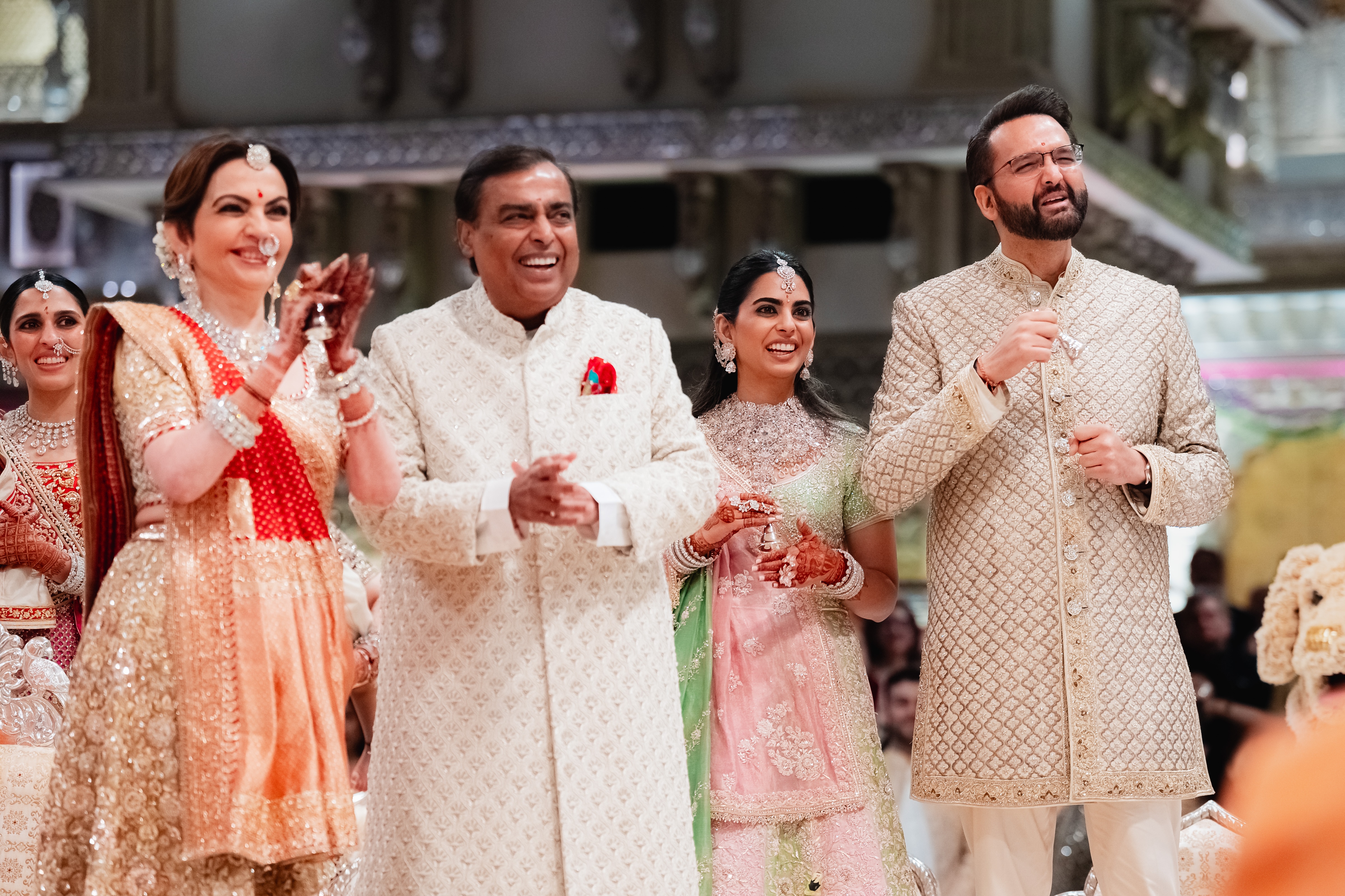Wedding of the Century: The Wedding That Put India Back on the Global Spiritual Map
A Year Since the Ambani Wedding: How a Marriage Ceremony Became a Landmark for India’s Spiritual Diplomacy and Social Good
When Anant Ambani and Radhika Merchant tied the knot a year ago, it wasn’t just India’s most talked-about wedding — it was a moment of civilizational significance that consciously put India back on the global spiritual map.
In an era of superficial grandeur, this event served a deeper purpose: to remind the world of India’s identity as the ancient spiritual nerve centre of humanity, where culture, faith, and service are inseparable.
Putting India on the Global Spiritual Roadmap
For decades, India’s image on the global stage has been dominated by its tech prowess, growing economy, and Bollywood exports. Yet, its foundational identity — as the land of ancient wisdom, yoga, dharma, and sacred traditions — remained under-celebrated in modern global forums.
The Ambani wedding reversed that.
By inviting the world’s business leaders, policymakers, and global influencers into the heart of India’s deepest rituals, it reintroduced India’s spiritual traditions to the world in their pure, authentic form.
From Grah Shanti Pujas and Shiv Shakti Abhisheks to Bhajan evenings and Vedic yajnas, it wasn’t a performative spectacle — it was a lived, sacred experience.

The wedding theme — “An Ode to Banaras” — wasn’t aesthetic nostalgia; it was a philosophical statement.
For the first time in modern memory, the world’s most powerful people witnessed the sanctity, symbolism, and spiritual gravitas of Hindu rites from up close. It was a masterstroke in spiritual diplomacy — reminding the world that while economies fluctuate, India’s civilizational wisdom endures.
An Unprecedented Spiritual Confluence
What made this wedding historically unique was the largest congregation of India’s spiritual luminaries in a private event in decades.
Shankaracharyas, Mahamandaleshwars, monks, saints, and acharyas from diverse sampradayas came together — not for a Kumbh, but for a wedding. The symbolism was unmistakable: India’s spiritual custodians standing shoulder to shoulder with its economic and social elite.
This union of dharma and artha (spirituality and prosperity) showcased to the world that India’s cultural power lies not in separation but in synthesis.
It wasn’t a wedding for the wealthy — it was a civilizational assembly reaffirming India’s role as the world’s spiritual heartland.

Shankaracharyas, Mahamandaleshwars, monks, saints, and acharyas from diverse sampradayas came together — not for a Kumbh, but for a wedding.
Serving Society: The Spiritual Duty of Seva
But the wedding wasn’t confined to private luxury. True to the Indian ideal of ‘Manav Seva hi Madhav Seva’ (service to humanity is service to the Divine) — it directly benefitted society.
The Ambani family began the celebrations by organizing a Samuhik Vivah for 50 underprivileged couples — funding their weddings, gifts, homes, and essentials for a dignified life.
More than that, a three-week-long Bhandara fed over 1,000 people daily, ensuring no one in the surrounding areas went hungry while festivities were underway. In a world where extravagance often alienates, this wedding integrated prosperity with compassion.
It sent a powerful message: in India, celebrations are incomplete without serving society.
A Cultural Revival in Banaras’ Name
The wedding theme — “An Ode to Banaras” — wasn’t aesthetic nostalgia; it was a philosophical statement. Banaras isn’t just a city; it’s the world’s oldest living spiritual capital. By invoking its imagery, temples, ghats, and cuisine in the heart of Mumbai, the wedding reminded both India and the world of the country’s spiritual continuity.
For foreign dignitaries and CEOs, it was a cultural awakening — an immersive journey into India’s eternal soul, far deeper than yoga retreats or heritage tourism.
It subtly but powerfully repositioned India not as a developing market, but as the global home of spiritual wisdom and civilizational longevity.
A New Benchmark for Modern India
A year later, the true legacy of the Ambani wedding isn’t its scale or star power — it’s how it reclaimed and showcased India’s spiritual identity to a 21st-century audience.
It demonstrated that faith and prosperity, tradition and modernity, ritual and relevance can coexist powerfully in today’s India.
And it reminded the global elite — many of whom seek spiritual meaning in an increasingly chaotic world — that India remains the wellspring of humanity’s deepest wisdom.
In doing so, it not only revived global respect for India’s spiritual heritage but also channelled that influence for the social good of the community around it.
News